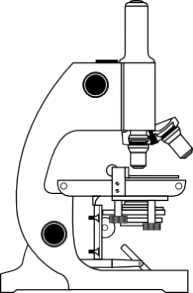
|
 |
For Better FISH Results...MetaSystems is further expanding it´s portfolio in the field of pathology and hematopathology. We are very proud to introduce two new FISH probes, XL 1p36/1q25 del and XL 19p/19q del, specific for the detection of 1p/19q deletions associated with the development of oligodendrogliomas. Co-deletion of 1p/19q is a well-accepted prognostic biomarker in neuro-oncology and is an indicator for good prognosis. Furthermore we are introducing the new probe XL MYCN amp, designed to detect amplifications of the MYCN gene at chromosomal location 2p24. MYCN expression is associated with the maintenance of self-renewal capacity and the pluripotent status of stem cells. Dysregulation of MYCN contributes to the development of different kind of childhood tumors including neuroblastoma. Our new probe XL IRF4 BA has been created for the investigation of IRF4 aberrations. Chromosomal translocations involving the IRF4 gene and the immunoglobulin loci IGH, IGL and IGK result in dysregulation of IRF4 expression associated with the devlopment of NHL, other translocation partners may occur. As usual, all probes are fully validated and CE certified.
|
XL 1p36/1q25 delClinical Applications: Solid tumorsXL 1p36/1q25 del detects deletions in the short arm of chromosome 1. The orange labeled probe hybridizes to the CHD5 locus at 1p36. A green labeled probe hybridizes to the ABL2 locus at 1q25 and functions as a reference probe. This probe is intended for methanol/acetic-acid fixed cells and tissue sections. Loss of heterozygosity on 1p can be detected in about 67% of oligodendroglial tumors and has also been identified in neuroblastomas and other tumor entities.
|
 |
Upper image: Signal pattern in normal cells hybridized with XL 1p36/1q25 del or XL 19p/19q del: Two green (2G) and two orange (2O) signals. Lower image: Signal pattern in typical aberrant cells hybridized with XL 1p36/1q25 del or XL 19p/19q del: Two green (2G) and one orange (1O) signal resulting from loss of one orange signal.
|
 |
XL 19p/19q delClinical Applications: Solid tumorsXL 19p/19q del detects deletions in the long arm of chromosome 19. The orange labeled probe hybridizes to the GLTSCR1 and GLTSCR2 locus at 19q13. A green labeled probe hybridizes to a specific locus at 19p13 and functions as a reference probe. This probe is intended for methanol/acetic-acid fixed cells and tissue sections. Loss of heterozygosity on 19q can be detected in about 80% of oligodendroglial tumors and to a lower extend in mixed gliomas.
|
XL MYCN ampClinical Applications: Solid tumorsXL MYCN amp detects amplifications in the short arm of chromosome 2. The green labeled probe hybridizes to the MYCN locus at 2p24. An orange labeled probe hybridizes to the NMI gene region at 2q23 and functions as a reference probe. This probe is intended for methanol/acetic-acid fixed cells and tissue sections. About 6% of all cancers in children are caused by neuroblastomas and 20-25% of neuroblastoma patients are showing an amplification of the MYCN gene. MYCN amplification is an important prognostic marker for risk stratification in neuroblastoma.
|
 |
Signal pattern in normal cells hybridized with XL MYCN amp: Two green (2G) and two orange (2O) signals.
|
 |
Signal pattern in typical aberrant cells hybridized with XL MYCN amp. Upper image: Two orange (2O), one green (1O), and a green signal cluster indicating amplification of MYCN (homogenously staining region=HSR). Lower image: Signal pattern in typical aberrant cells hybridized with XL MYCN amp: Two orange (2O) and multiple copies of green signals indicating amplification of MYCN (double minutes=dm).
|
XL IRF4 BAClinical Applications: NHLThe XL IRF4 BA probe is designed as a break apart probe. The orange labeled probe hybridizes distal to the breakpoint in the IRF4 gene region at 6p25, the green labeled probe hybridizes proximal to the breakpoint. This probe is intended for methanol/acetic-acid fixed cells and tissue sections. The updated (2016) revision of the World Health Organization (WHO) classification of tumors of lymphoid neoplasms considers the large B-cell lymphoma with IRF4 rearrangement as a new provisional entity. IRF4 rearrangements have also been identified in peripheral T-cell lymphomas (PTCL).
|
 |
Upper image: Signal pattern in normal cells hybridized with XL IRF4 BA: Two green-orange colocalization/fusion signals (2GO). Lower image: Signal pattern in typical aberrant cells hybridized with XL IRF4 BA: One green-orange colocalization/fusion signal (1GO), one separate green (1G) and orange (1O) signal each resulting from a chromosome break in the IRF4 locus.
|
 |
XL IRF4 BA hybridized to lymphocytes, one aberrant cell is shown. The expected normal signal pattern is two green-orange colocalization-fusion signals representing the two normal IRF4 loci. Translocations affecting the IRF4 locus are separating one green-orange colocalization-fusion signal resulting in one separated green, one orange and one green-orange colocalization-fusion signal as shown above.
|